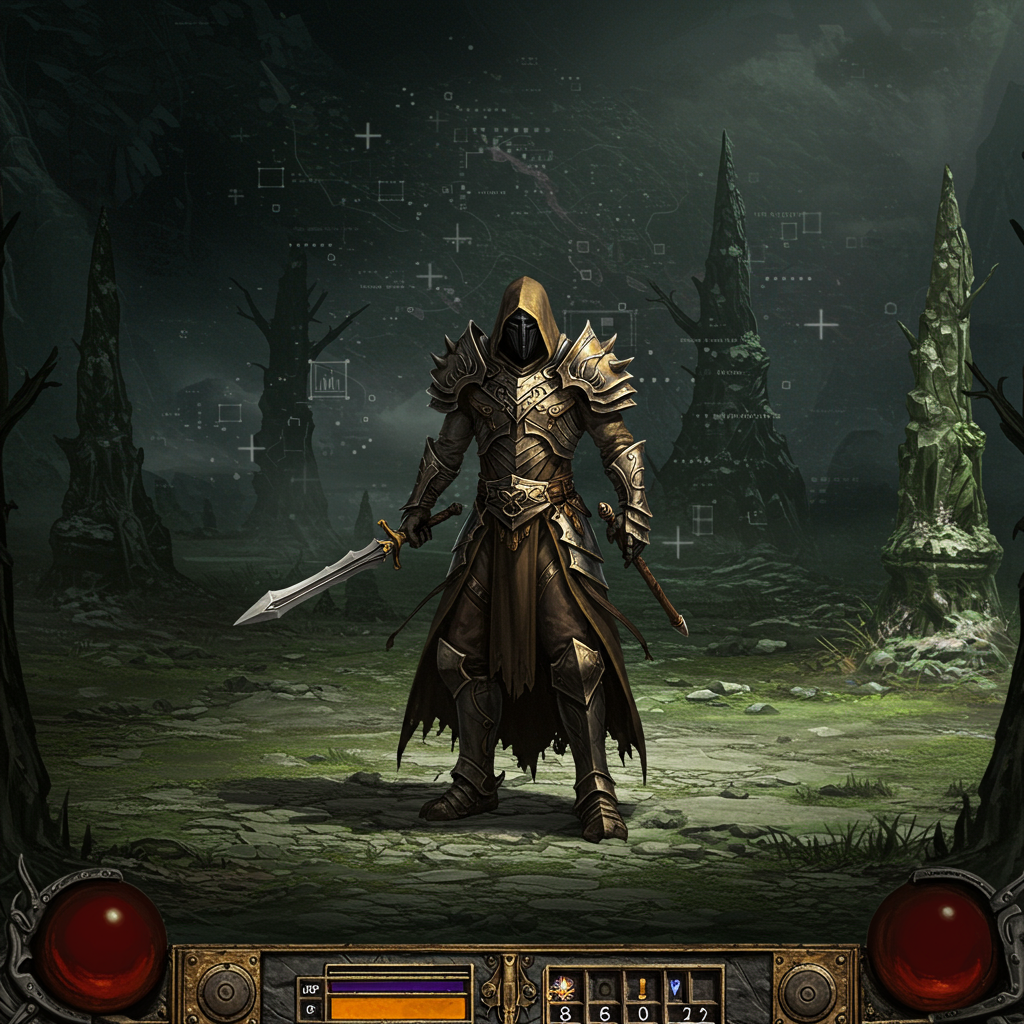Diablo 2: Resurrected successfully brought a beloved classic back to life with stunning modern graphics and quality-of-life tweaks. However, years after its launch, many dedicated players feel development has stagnated, leading to a quiet sense of abandonment. The upcoming eleventh online ladder reset on June 20, 2025, underscores this concern, as it is set to introduce no new changes or content to the game – a pattern seen in recent seasons.
For a game operating as a live service, this lack of continuous evolution can be frustrating. While Blizzard’s focus may have shifted towards newer titles like Diablo 4, which receives regular updates and expansions aimed at long-term engagement and uses player feedback to iterate, the static state of Diablo 2: Resurrected‘s seasons stands in stark contrast to the dynamic updates players might expect, or even see in competitor titles like Path of Exile, which continues to receive substantial updates alongside its sequel’s development.
The Community’s Answer: Project Diablo 2
Feeling left wanting by the official version, many players, including longtime fans, are finding a vibrant, continually evolving Diablo 2 experience elsewhere: in large-scale fan-made mods running on the original Diablo 2: Lord of Destruction engine. The most prominent example is Project Diablo 2 (PD2).
Despite utilizing the classic graphics from 2001 (albeit with technical enhancements for modern displays like 1440p support and unlocked frame rates), PD2 offers a wealth of content and improvements that make the game feel like it never stopped being developed. Launched in May 2025, PD2’s eleventh season (mirroring D2R’s count) arrived with massive updates that fundamentally refresh the gameplay experience, a key difference from D2R’s bare resets.
PD2 boasts an active online community and crucial quality-of-life features conspicuously absent in the official remaster, such as:
Stackable runes, gems, and currency.
Dedicated currency stash tabs.
Customizable loot filters.
A significantly expanded personal stash.
Beyond convenience, PD2 completely revitalizes the gameplay loop and endgame:
Rebalanced Items: Unique and rare items are reworked and genuinely powerful, with expanded crafting options and a new “corruption” mechanic adding exciting twists.
Increased Build Diversity: Previously niche or underperforming skills and synergies are buffed, allowing for a much wider range of viable character builds capable of tackling challenging content.
Expanded Endgame: Replacing the repetitive Baal runs, PD2 introduces a mapping system similar to Path of Exile, providing diverse, modded areas, new bosses, and dungeons that offer ongoing challenges and keep the endgame fresh.
This active development and community interaction highlight the potential for Diablo 2 when independent creators are empowered.
The Barrier: Blizzard’s Stance on Online Modding
The critical question arises: why hasn’t a successful project like PD2 been ported to the visually superior Diablo 2: Resurrected platform? The answer lies in a key technical decision Blizzard made for the remaster: the removal of TCP/IP support shortly before D2R’s launch, citing security reasons.
This decision effectively isolates Diablo 2: Resurrected from the type of robust online modding that has kept the original Lord of Destruction alive for two decades. TCP/IP allowed third parties to host private servers with custom rules, separate ladder systems, and fundamentally altered gameplay, forming the backbone of communities like PD2. While D2R supports some mods, they are currently limited to offline single-player, lacking the crucial shared community, trading, and competitive ladder experience that defines many Diablo 2 players’ engagement.
A Different Model: Developer Support for Fan Projects
Contrast Blizzard’s restrictive approach with examples from other major developers. Bethesda, for instance, has shown notable support for large-scale fan projects like Skyblivion (a remake of Oblivion in the Skyrim engine). The Skyblivion team has received encouragement, copies of game assets, and even an invitation to Bethesda HQ, where executives like Todd Howard reportedly took genuine personal interest in the modders’ work. This demonstrates that it is possible for developers to engage positively with ambitious community-driven projects, fostering goodwill and potentially extending the life and legacy of their titles in unexpected ways.
The Path Forward for Diablo 2: Resurrected
While rumors suggest Blizzard may be conducting a focus group regarding Diablo 2: Resurrected, leading to cautious hope for potential future quality-of-life improvements like stackable items or rebalanced gear (features already present in PD2), the most impactful step Blizzard could take to truly “Resurrect” the game for years to come is to enable online modding support.
Reintroducing a secure way for community-run, modded online servers would unleash the creative potential of talented independent developers onto the modern D2R engine. It would provide players with choice: enjoy the classic remastered experience on the official servers, or dive into wildly innovative, community-driven versions with ongoing content and unique gameplay systems.
While security concerns are understandable, the continued use of TCP/IP by modders on the original Lord of Destruction without widespread issues suggests a potential path forward could exist. By facilitating online modding, Blizzard wouldn’t just be appeasing a niche group; they would be tapping into a powerful engine of innovation and community engagement that has historically been the lifeblood of Diablo 2*, ensuring its relevance and appeal extend far beyond its current, static state. It’s time for Blizzard to unlock that potential and let the community help shape the future of this legendary ARPG.




